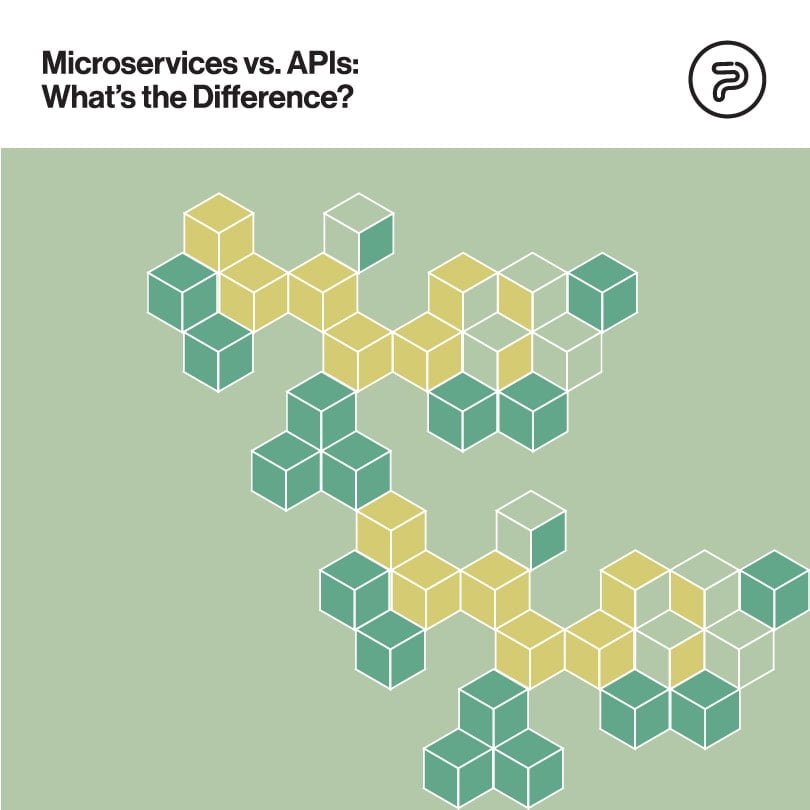When we talk about topics such as integrations and software architecture, we also tend to throw around a few fancy-sounding terms like microservices and APIs, and if you haven’t been long in the dev game, chances are, sometimes you don’t have the slightest idea what we’re talking about.
To get started, you need to know that both of these concepts are pivotal to developing web applications and to web design as well. Also, there’s certainly some overlap in their uses as well. However, even then, it’s rather important to understand the basic differences between APIs and microservices and how these two technologies are applied.
This won’t only help you have more fruitful conversations with the people from the industry but will also help you better understand the apps you use (and have, if you are a site owner).
As such, in this guide, we’ll define both of these terms separately. We also cover how they work, why they are paramount in model development and design, and lastly, we’ll see how they fit together in the current software ecosystem.
Defining an API
Also known as an application programming interface, the API is the part of an application that communicates with other apps across the board. To get more technical, an API is basically a specific protocol and method group that defines how two different apps can share and modify each other’s data.
These programming interfaces are important and rather necessary in a modern digital infrastructure because they provide the groundwork for efficient and standardized communication between two differently constructed and functioning apps.
As such, an API usually sits between a software’s core components and the public. External developers can often access specific parts of an app’s backend without having to learn and understand how the entire app works and functions. This is what makes an API a programmer’s interface.
API Uses
If you have been using software, you definitely have been using APIs as well. Why? Because the APIs are what enable software integrations, or otherwise separate software entities to function with each other and share information.
Just take a look at this example, for instance. Let’s say you are shopping online. Your cart is full and you’re just about ready to check out. Then, you see that the online store that you’re shopping on enables you to use the PayNow payment processor, on which you already have an account and everything set up.
However, PayNow is a totally different company from the store you are currently visiting, so an API facilitates a connection (interaction) between PayNow and said store. First, the online store will use PayNow’s payment gateway API and request your payment info. From there, the PayNow API will field and validate the request, fetch the necessary information from its database (your payment info) and send it back to the online store. Finally, the store will use your card info and complete the transaction.

In this example, thanks to PayNow, the store will get all the necessary information it requires to complete the checkout without the need to process the entire PayNow database and without requiring you to leave the store’s website.
Similar exchanges happen almost all the time when two separate applications have to work together. Other great API examples would be embedded YouTube videos or a travel website that uses an airline’s API to see flight times and ticket prices. You’ve also probably seen tons of sites that use Facebook’s or Google’s APIs to enable social login. Similarly, a navigation app works the same when accessing public transit system APIs for transportation data in real-time.
What are Rest APIs?
As you can see, an API is more of a concept than anything else, programmers can usually build a fully custom API for their web app services on their terms. However, most programmers will rely on frameworks to create APIs.
Here’s where REST comes into the picture. REST stands for Representational State Transfer, which is a framework specifically created for API development. As such, the APIs that conform to REST is what programmers call REST APIs. These are the most common API types for cross-platform integrations, and they are also pretty commonly used in microservices as well.
Without having to write a complete guide on REST APIs, here’s a brief overview of how they work and what they do.
REST basically outlines a group of constraints for building these APIs that make them secure and efficient. REST APIs usually work by HTTP request fielding and response returning in JSON (or JavaScrip Object Notation) format. The Hypertext Transfer Protocol (Or HTTP) is already the standard when it comes to web-based data transfer. So, with basic HTTP knowledge, developers can easily figure out how to build or at least. Interact with REST APIs.
Internal APIs and External APIs
To be honest, so far, we’ve been talking about one specific API type, which we call web API. These APIs facilitate communication between web servers. The examples we detailed above are also all open API examples, which basically means that they are available for anyone to use, like third-party software developers.
That being said, you should also know that not all APIs have to be available publicly. When we’re talking about internal APIs, for instance, we are talking about interfaces that are used for communication within an app, with restricted access. Usually, organizations will use this API type and will grant access to authorized developers and employees.
What are Microservices?
Most simply put, microservices are software architecture styles that divide the application’s specific functions into “services”, or smaller components. When developers build an application this way, they will say that it follows a microservice architecture.
Usually, developers will refer to the smaller components as “microservices” In order to avoid confusion, we’ll stick to the “services” term when we’re describing when we talk about the components and use “microservices” when talking about the entire system architecture.
Here’s an example. The microservice architecture for an app such as PlayNow would usually consist of individual services for user account management. User authentication, integrations with online merchants, and so on. Each of these services works like its own small piece of software within a larger system.
Within the larger microservice system, each service has just one task, but the scope of said task is usually up to the developers.
In the case of a basic software application, you might only find a handful of services (like in the case of PayNow). In other cases, larger systems may comprise hundreds of smaller services with highly specific tasks.
Why Bother Using a Microservice Architecture?
To truly appreciate and understand the importance and impact of the microservice architecture, we first need to take a moment and talk about its predecessor, the monolith.
A monolithic app is the opposite of the microservice architecture. What this means is, instead of assigning different tasks to specific, individual self-contained services, every single function within the app is carried out and handled by one single program.
At first, this approach seems quite legitimate. We mean, why create multiple programs to worry about when one single program can take care of everything, right? It might make sense from this perspective, but as it turned out, rolling out updates and adding more capabilities and complexity to applications that use the monolithic approach is more difficult. It was also more difficult to keep track of changes, identify problems, efficiently delegate development tasks, and generally to better understand the code they are written in.
In the monolithic approach, everything is “too connected” and things can get hard to untangle.

These problems and issues all led to the need to create a different architecture type, one which makes things more streamlined and easier.
For example:
• Simplicity: When working with a microservices system, a developer doesn’t have to understand every bit of the system, just one aspect of the software to work on it efficiently.
• Updates: In a microservice architecture, updating individual services is much easier as you don’t need to modify the entire system. It’s time and cost-efficient, and also, the debugging process is a lot shorter as well. It also enables rolling out more frequent updates instead of having to deal with a few major updates.
• Security: If one of the services gets compromised, you don’t have to change everything as it (ideally) won’t affect any of the remaining services significantly.
• Team Organization: Microservices help define boundaries between the developer and the responsibilities. Certain teams can be assigned to one or more specific microservice, instead of a portion of a large monolith.
• Robustness: As with security, if one of the services breaks, the others remain unharmed and fully functional.
• Flexibility: Let’s say a team wants to build a service with a different framework or a different language. In a microservice system, they don’t have to worry about the impact it will have on the other components.
This is pretty much all it. The microservice architecture separates responsibilities, simplifies, and expedites the development process.
Obviously, a collection of totally isolated modules still won’t make an application work, which is why the services need to be linked together by the APIs we talked about above.
Microservices vs APIs
So, before finally comparing these two, let’s take another quick recap just to be on the safe side.
- An API is the part of the web abb that enables it to communicate with other apps. A software API defines a set of acceptable requests to other APIs along with the responses to said requests.
- A microservice is an approach that usually defines how developers build an application. It breaks down all the app’s functions into self-contained modular programs. As such, they make both the development process and maintenance easier.
While they are rather different, APIs and Microservices are frequently used together in conversations because the services within the microservice architecture will usually use APIs to communicate with each other. Just like apps use a public API to integrate with different apps, one component (or service) within a microservice uses a private API to access a different component within the same microservice.
In said microservice, each service has its very own API which determines the requests it can receive along with the responses. These APIs will typically follow REST principles.
Also, it’s important to understand that no two microservices are alike. As such, all of them utilize APIs differently. Some might assign several APIs to a single service, or use one API for accessing several services. Not every app follows a one-to-one API-to-service pairing.
Lastly, it’s important to remember that APIs will pretty much have uses beyond microservices. As we’ve touched bases on this before, web APIs will enable data-sharing between different systems which is necessary for many web apps to function efficiently. Also, APIs can also be used for internal purposes without the need to implement a microservice system.
Finishing Thoughts
As you can see, these two terms are pretty much different but are pretty tied closely together. APIs are necessary for services and entire applications to communicate with other services (within a microservice) and other apps online.
Microservices, on the other hand, are systems (or a development approach) that streamline app functionality and help developers create apps more efficiently with better and easier maintenance practices.





